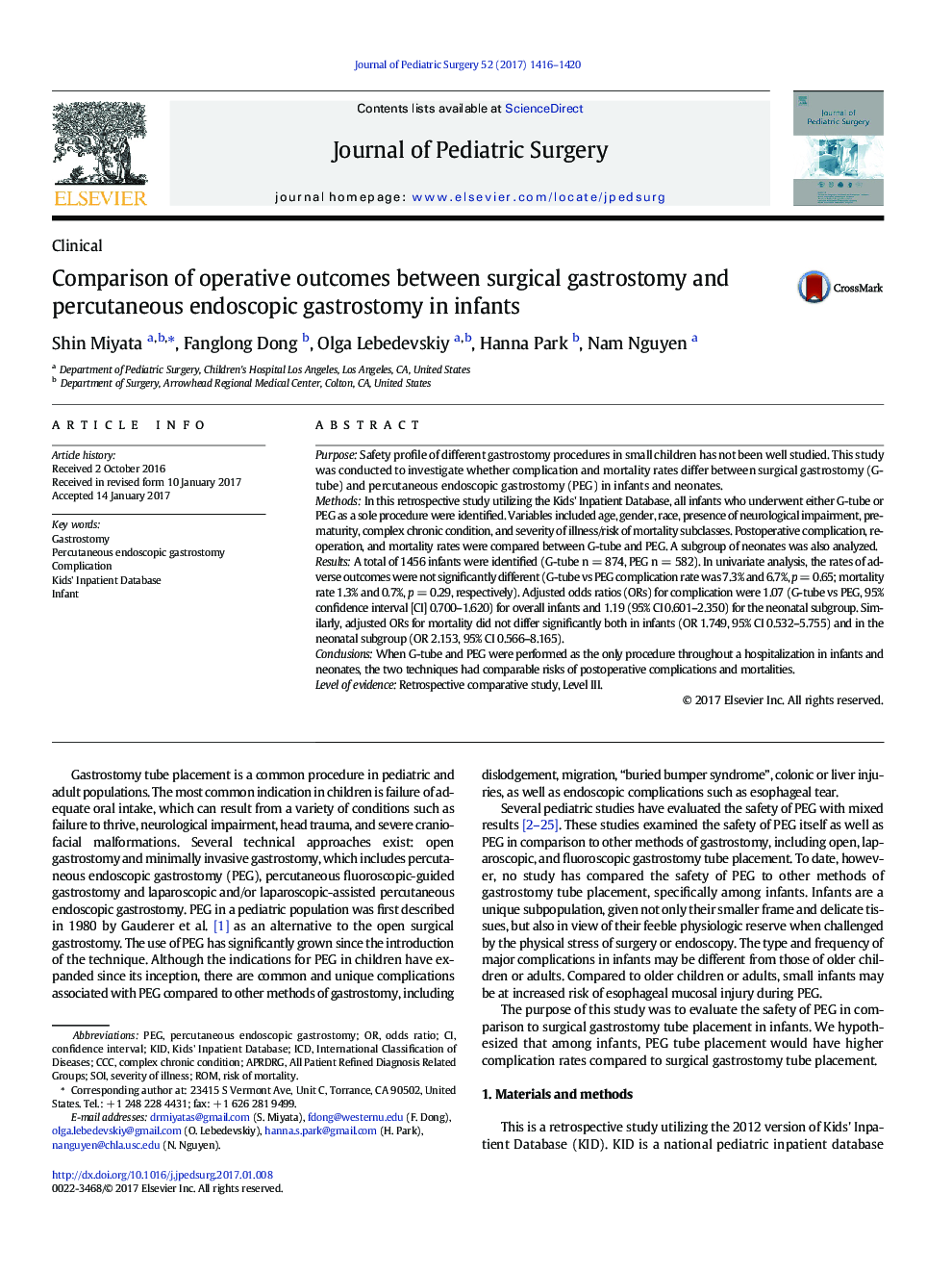| Article ID | Journal | Published Year | Pages | File Type |
|---|---|---|---|---|
| 5718277 | Journal of Pediatric Surgery | 2017 | 5 Pages |
PurposeSafety profile of different gastrostomy procedures in small children has not been well studied. This study was conducted to investigate whether complication and mortality rates differ between surgical gastrostomy (G-tube) and percutaneous endoscopic gastrostomy (PEG) in infants and neonates.MethodsIn this retrospective study utilizing the Kids' Inpatient Database, all infants who underwent either G-tube or PEG as a sole procedure were identified. Variables included age, gender, race, presence of neurological impairment, prematurity, complex chronic condition, and severity of illness/risk of mortality subclasses. Postoperative complication, reoperation, and mortality rates were compared between G-tube and PEG. A subgroup of neonates was also analyzed.ResultsA total of 1456 infants were identified (G-tube n = 874, PEG n = 582). In univariate analysis, the rates of adverse outcomes were not significantly different (G-tube vs PEG complication rate was 7.3% and 6.7%, p = 0.65; mortality rate 1.3% and 0.7%, p = 0.29, respectively). Adjusted odds ratios (ORs) for complication were 1.07 (G-tube vs PEG, 95% confidence interval [CI] 0.700-1.620) for overall infants and 1.19 (95% CI 0.601-2.350) for the neonatal subgroup. Similarly, adjusted ORs for mortality did not differ significantly both in infants (OR 1.749, 95% CI 0.532-5.755) and in the neonatal subgroup (OR 2.153, 95% CI 0.566-8.165).ConclusionsWhen G-tube and PEG were performed as the only procedure throughout a hospitalization in infants and neonates, the two techniques had comparable risks of postoperative complications and mortalities.Level of evidenceRetrospective comparative study, Level III.
